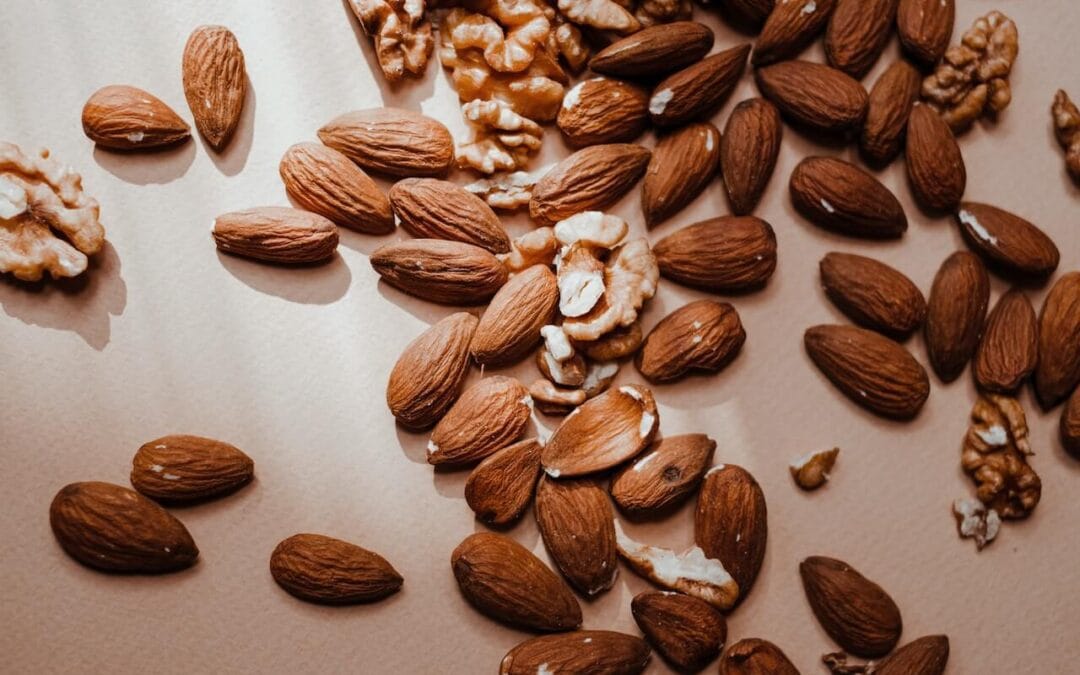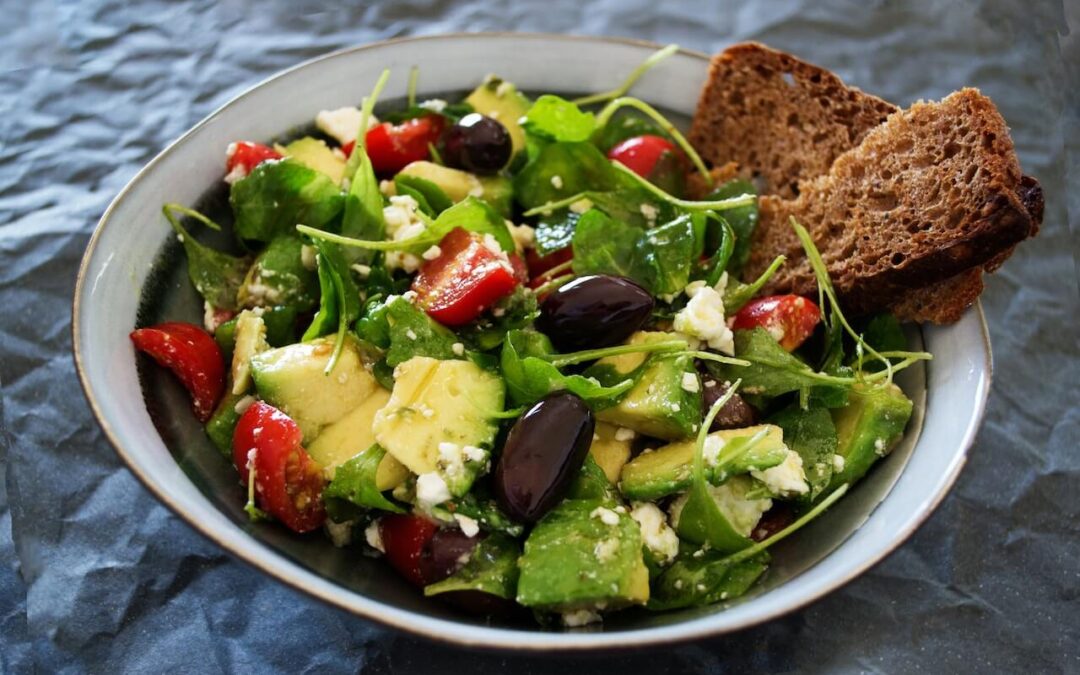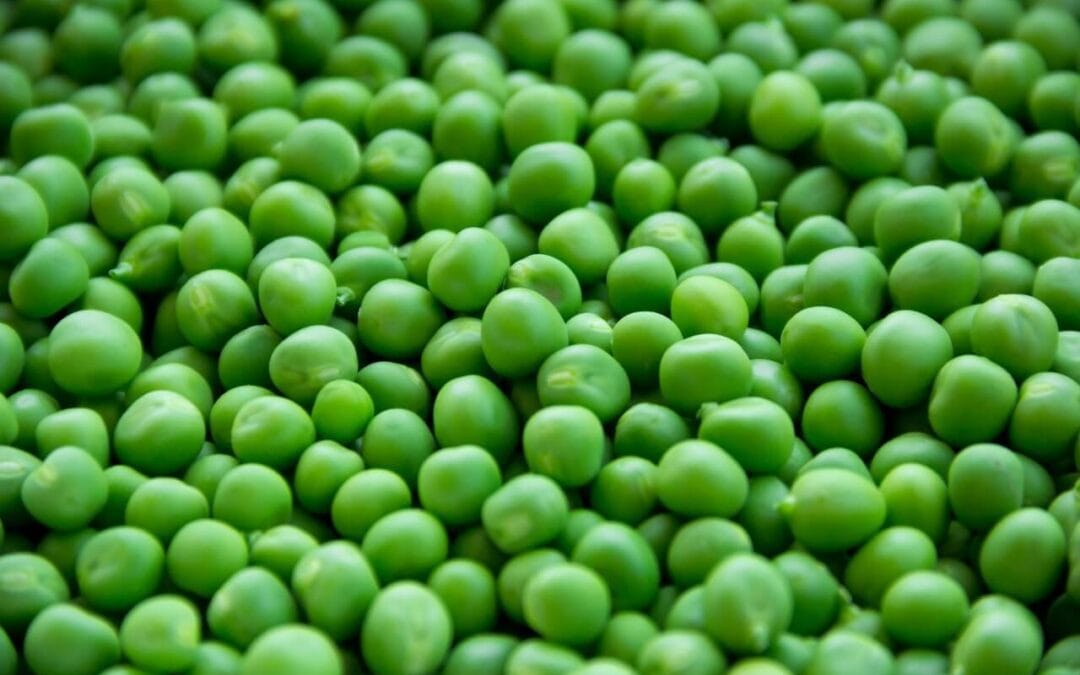Few diets are widely advised as the Mediterranean diet. That’s because it’s not a diet but rather a way of life, according to Elena Paravantes-Hargitt, a certified dietitian-nutritionist and the founder of Olive Tomato. Paravantes-Hargitt currently resides in Greece. “It’s based on how people lived and ate in particular sections of the Mediterranean, so it’s pretty sustainable and realistic,” she explains.
What Is the Mediterranean Diet Exactly?
The Mediterranean diet is primarily plant-based. “It’s essentially a peasant diet,” adds Paravantes-Hargitt. People ate whatever was growing in their gardens, dairy, and olive oil.”
For a helpful visual representation of today’s Mediterranean diet, Paravantes-Hargitt advises visiting Oldways. This group established the Mediterranean diet pyramid 25 years ago in collaboration with the Harvard T.H. Chan School of Public Health and the World Health Organization. Above all, eat entire grains, fruits, vegetables, beans, herbs, spices, nuts, and olive oil. The organizations advocate eating fish and shellfish twice a week, as well as dairy, eggs, and chicken, in moderation. Red meat and sweets are only eaten on rare occasions.
What Are the Benefits and Risks of the Mediterranean Diet?
If you’re on the fence about eating more Mediterranean, consider all the evidence supporting it. According to research and meta-analysis, every point rise in the Mediterranean diet score (how well one follows the eating pattern on a scale of 1 to 9) is connected with a 5% decreased mortality risk from any cause. (1)
Regarding your ticker, it’s likewise challenging to look past these figures. In a study of over 26,000 women, those who adhered to the Mediterranean diet the most were up to 28% less likely to develop heart disease. The diet may be especially beneficial since it can lower inflammation. Furthermore, according to scientists, the antioxidant component hydroxytyrosol, present in diet staples (fruits, nuts, extra-virgin olive oil), has been demonstrated to repair heart-harming free radical damage. (2)
While living longer and taking care of your heart are vital to you, there’s no doubt that the Mediterranean diet has the potential to help you lose weight. Although this eating plan is not the primary purpose, it may help you maintain weight without feeling deprived. For eight weeks, Harvard University and Emory University researchers followed a group of overweight or obese adults on the Mediterranean diet and a control group eating a standard American diet supplemented with fish oil, walnuts, and grape juice — foods that supply vital nutrients in the Mediterranean diet. (3)
The typical American diet is high in foods high in saturated fat, added sugar, and salt. Compared to the control group, Mediterranean diet users lost more weight, had lower levels of inflammatory markers in their blood, and had lower total and LDL (“bad”) cholesterol. The added benefit: Because it wasn’t designed to be a weight reduction study, both groups ate around the same number of calories (it was simply a lovely addition).
Regarding hazards, dietitians frequently advise people with chronic conditions like type 2 diabetes to follow a Mediterranean-style diet. While this diet is heart-healthy, the American Heart Association notes that it contains more fat than is usually suggested (albeit it is still low in dangerous saturated fat). The right-up arrow The big takeaway: This is one of the healthiest ways to eat, but as with everything else, if you’re altering your diet or utilizing a diet as part of your illness treatment plan, always see your doctor first. (4)
5 Tips for Creating Your Mediterranean Diet Plan
The good news is that because this is a way of eating rather than a set of rigorous rules, you may personalize it to your preferences. There is no such thing as following this to the letter or falling off the wagon and feeling like a failure. “Even within the Mediterranean diet, there are special event days,’ when you may eat more or consume items that are perhaps not very healthy, but that is also part of the lifestyle,” explains Paravantes-Hargitt. “Food is meant to be enjoyed, and the Mediterranean diet encourages a positive connection with food.” The Mediterranean diet includes’ cheating.’ You do your business the next day as if nothing had occurred.”
Still, here are five essential pointers to get you started:
- Consume more legumes. Not only are they a basic that you’re probably not eating enough of anyway, but they’re also inexpensive and provide a variety of nutritional advantages, such as being high in fiber and protein, low in fat, and a source of B vitamins, iron, and antioxidants, according to Paravantes-Hargitt. Lentils, dried peas, beans, and chickpeas are examples (like Hummus).
- Don’t drink too much alcohol. One prevalent misconception is that folks who follow the Mediterranean diet consume a lot of red wine. “Wine is drunk in moderation and always with food in the Mediterranean diet,” Paravantes-Hargitt notes. “A little amount of wine, around 3 to 4 ounces, is often taken with the dinner.”
- Make meat a side dish. According to Paravantes-Hargitt, traditionally, people ate meat only on exceptional occasions, such as Sunday suppers, and even in tiny portions. Incorporate more vegetarian-based main dishes into your days, such as ones centered on beans, tofu, or seitan. “Going vegetarian one day a week is an excellent start,” she suggests. When you eat meat, choose skinless chicken and limit red meat to once a week or twice a month.
- Consume fewer sweets. Desserts, like meat, should be reserved for exceptional occasions. That doesn’t mean you can’t have a little sugar in your coffee if you like, but “daily, there isn’t much sugar ingested,” adds Paravantes-Hargitt.
- Cooking in olive oil: Make extra-virgin olive oil your cooking oil. While using too much of this oil might contribute to weight gain (it is a fat, after all, so the calories can rapidly pile up), it is high in heart-healthy polyunsaturated and monounsaturated fat, so you can feel good about keeping a bottle on hand. You can also use it cold to make salad dressing or to spread over cooked vegetables or side dishes.
A Complete Mediterranean Diet Food List
When making your meals more Mediterranean, here’s what to eat and what to avoid:
Protein
Liberally
- Beans
- Lentils
- Chickpeas
- Tofu
- Tempeh
- Seitan
Occasionally
- Chicken
- Fish
- Seafood
- Eggs
Rarely or Never
- Red meat (beef and pork)
- Cured meats (bacon, sausage, and salami)
- Processed meat products (chicken nuggets)
Oil and Fat
Liberally
- Extra-virgin olive oil
- Avocados and avocado oil
- Olives
Occasionally
- Canola oil
Rarely or Never
- Trans fats
- Margarine
- Butter
Fruits and Veggies
Liberally
- Nonstarchy veggies (zucchini, eggplant, bell peppers, artichokes, and dark greens)
- Starchy veggies (sweet potatoes, potatoes, and root vegetables)
- All fruits (peaches, cherries, apricots, strawberries, raspberries, blueberries, and blackberries)
Occasionally
- There are no off-limits fruits or vegetables.
Rarely or Never
- No fruits or veggies are off-limits.
Nuts and Seeds
Liberally
- While they may be consumed daily, they should be consumed in moderation.
Occasionally
- Almonds
- Pistachios
- Hazelnuts
- Walnuts
- Cashews (and all other unsweetened nuts)
Rarely or Never
- Sweetened trail mixes
- Sweetened nut butter
- Sugar-coated nuts
Grains
Liberally
- Whole-grain bread (look for whole-wheat flour as the first ingredient)
- Whole grains (farro, bulgur wheat, barley, and quinoa)
- Oatmeal (steel-cut or old-fashioned)
Occasionally
- Pasta (choose whole-wheat pasta whenever possible)
- Couscous
- Whole-grain crackers
- Polenta
- All-bran cereals
Rarely or Never
- Frozen waffles and pancakes
- Sugar-sweetened cereals
- Crackers and other snack foods
Dairy
Liberally
- These are consumed in moderation.
Occasionally
- Plain Greek yogurt
- Plain ricotta and cottage cheese
- Milk
- Brie, feta, or goat cheese (plus other cheeses that you enjoy)
Rarely or Never
- Ice cream
- Sweetened yogurt
- Processed cheese (like American)
Sweeteners
Liberally
- These are consumed in moderation.
Occasionally
- Honey
- A small amount of added sugar (in coffee or tea, for example)
Rarely or Never
- White sugar
Condiments and Sauces
Liberally
- Tomato sauce (no sugar added)
- Pesto
- Balsamic vinegar
Occasionally
- Aioli
- Tahini
- Tzatziki
Rarely or Never
- Barbecue sauce
- Ketchup
- Teriyaki sauce
Drinks
Liberally
- Water
- Coffee
- Tea
Occasionally
- Red wine or other alcohol
Rarely or Never
- Soda
- Fruit juice
- Bottled sweetened coffee
Herbs and Spices
Liberally
- All dried herbs and spices
- All fresh herbs
- Garlic
Occasionally
- Salting food to taste
Rarely or Never
- There’s no reason to restrict these in your foods.
Your 14-Day Mediterranean Diet Eating Plan
Do you want to learn how to eat like a Greek? Here are some suggestions on where to begin when preparing your meal. Please keep in mind that we do not provide portion quantities. This is one diet where calorie tracking is not required; what your body needs will differ from that of the following individual.
Also, with the aid of Paravantes-Hargitt, we’ll teach you how to transition to a more Mediterranean-style diet that fits your lifestyle rather than a comprehensive overhaul.
Day 1
- Breakfast coffee or tea with berries on top of porridge
- A handful of almonds or walnuts as a snack
- Half a turkey sandwich on whole-grain bread and a cup of lentil soup for lunch
- Snack hummus-dipped carrots, bell peppers, and cucumbers
- Stew with vegetables and white beans for dinner
Day 2
- Breakfast: Coffee or tea with plain Greek yogurt drizzled with honey and walnuts
- Roasted chickpeas as a snack
- Lunch: Vegetable and bean stew from yesterday’s supper
- Peach as a snack (or apple, depending on the season)
- Dinner: Roasted chicken with pita bread, tzatziki (yogurt-based sauce), and a side salad
Day 3
- Breakfast Smoothie created with your choice of milk, fruit, and nut butter
- Snack on whole-grain crackers with ¼ avocado mashed with lemon juice and salt.
- Lunch: Three-bean soup with pesto on top served with a whole-grain bun
- Snack pack with olives and fresh vegetables
- Salmon for dinner with farro roasted zucchini and eggplant
Day 4
- Coffee or tea with toasted whole-grain bread, sliced cheese, and strawberries for breakfast
- Pistachios as a snack
- Lentil salad with feta, roasted red peppers, sun-dried tomatoes, and olives for lunch
- Snack on Greek yogurt and fresh fruit.
- Grilled shrimp with sautéed greens and polenta for dinner
Day 5
- Breakfast: Coffee or tea and a breakfast dish of leftover farro (from the previous day’s dinner), topped with a poached egg and a couple of slices of avocado.
- Dried apricots with walnuts as a snack
- Lunch: Quinoa, bean, and vegetable salad with whole-grain bread
- Whole-grain crackers with black bean dip
- Dinner: Grilled marinated chicken skewers with bulgur wheat cucumber, and red onion salad
Day 6
- Coffee or tea with smoked salmon, capers, and tomato slices for breakfast
- Snack on seasonal fruits (such as a peach or two apricots in summer or a pear in winter)
- Mediterranean bean salad and whole-grain crackers for lunch
- Cheese and olives as a snack
- Moroccan lamb stew with couscous for dinner
Day 7
- Coffee or tea and Greek yogurt with sunflower seeds and strawberries for breakfast
- Snack: orange slices and pistachios
- Lunch: A whole-grain loaf of bread with sliced tomatoes, cheese, and olives
- Packaged spiced lupini beans for snacking
- Red lentil and vegetable stew for dinner
Day 8
- Breakfast: Coffee or tea, two eggs over easy with sautéed greens (spinach or kale), and an orange
- Roasted chickpeas as a snack
- Day 6 Supper leftover lamb stew for lunch
- Snack Mixed almonds with a dark chocolate chunk
- Dinner: roasted potatoes and zucchini with baked white fish
Day 9
- Breakfast smoothie blended with milk, frozen cherries, banana, and cocoa powder.
- Snack Hummus-stuffed little peppers.
- For lunch, tuna salad with olive oil, dried herbs, olives, and sun-dried tomatoes is served over a bed of spinach with mixed vegetables and whole-grain crackers.
- Snack: A slice of cheese with a bit of fruit
- Dinner Tuscan white bean soup served with whole-grain bread.
Day 10
- Breakfast: Coffee or tea and a dish of oats topped with raisins and crumbled walnuts, with honey drizzled on top if desired
- Snack on Greek yogurt and fruit.
- Supper leftover Tuscan white bean soup for lunch
- Snack on Hummus with raw vegetables such as red peppers, celery, and cucumber.
- Garlic lemon chicken thighs with asparagus and Israeli couscous for dinner
Day 11
- Breakfast: A cup of coffee or tea, along with a slice of vegetable frittata with avocado
- Apple with nut butter as a snack
- Lunch Dolmas with Hummus and pita (search for these filled grape leaves in the prepared food department of select supermarkets).
- Greek yogurt dip with sliced vegetables as a snack
- Seafood stew for dinner (shrimp and white fish in a tomato base)
Day 12
- Breakfast: Coffee or tea, a small bowl of ricotta, fruit (berries, peaches, or fresh apricots), and honey-dripping
- A handful of gently salted nuts as a snack (hazelnuts, pistachios, almonds, or a mix)
- Lunch: Greek pasta salad with red onion, tomato, Kalamata olives, and feta served on romaine lettuce
- Fruit salad as a snack
- Meal Leftover fish stew from day 11’s dinner
Day 13
- Coffee or tea and porridge with nut butter and blueberries for breakfast
- Greek yogurt snack container
- Lunch sandwich of salmon salad with a cup of bean-based soup
- Snack on whole-grain crackers with mashed avocado
- Dinner Shakshuka (baked eggs in tomato sauce) paired with feta and polenta
Day 14
- Breakfast: Coffee or tea, as well as toasted whole-grain bread with ricotta and sliced fruit
- Dried cranberries and mixed nuts as a snack
- Quinoa bowl for lunch with roasted sweet potatoes, goat cheese, and walnuts
- Snacks include olives and pita chips dipped in Hummus.
- Dinner Pasta with artichokes and cannellini beans, bread crumbs, and Parmesan







0 Comments